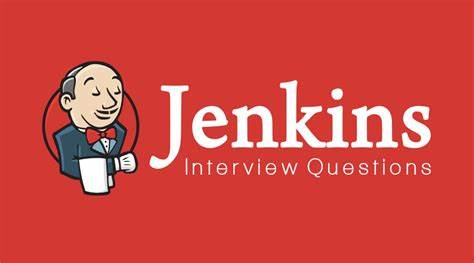Unlocking the Secrets: Essential Jenkins Interview Questions
 Rohan Balgotra
Rohan BalgotraTable of contents
- Introduction
- Questions:
- 🌟 What’s the difference between continuous integration, continuous delivery, and continuous deployment?
- 🌟 Benefits of CI/CD
- 🌟 What is meant by CI-CD?
- 🌟What is Jenkins Pipeline?
- 🌟 How do you configure the job in Jenkins?
- 🌟 Where do you find errors in Jenkins?
- 🌟 In Jenkins how can you find log files?
- 🌟 Jenkins workflow and write a script for this workflow?
- 🌟 How to create continuous deployment in Jenkins?
- 🌟 How build job in Jenkins?
- 🌟 Why we use pipeline in Jenkins?
- 🌟 Is Only Jenkins enough for automation?
- 🌟 How will you handle secrets?
- 🌟 Explain diff stages in CI-CD setup
- 🌟 Name some of the plugins in Jenkin?
- Conclusion:

Introduction
Delve into the world of Jenkins with this insightful guide! 🚀 We're here to simplify the most crucial Jenkins questions, providing you with the knowledge and confidence to excel in your interviews. Let's unlock the answers together!
Questions:
🌟 What’s the difference between continuous integration, continuous delivery, and continuous deployment?
Continuous Integration (CI):
Frequent code merging.
Detects integration issues early.
Continuous Delivery (CD):
Automated, reliable releases.
Not automatically deployed to users.
Continuous Deployment (CD):
Fully automated, instant releases.
Code automatically goes live for users.
🌟 Benefits of CI/CD
Here are 10 succinct benefits of CI/CD:
Speed*: Accelerates development and delivery.*
Early Bugs*: Detects and fixes issues early.*
Reliability*: Ensures consistent releases.*
Automated Testing*: Enhances code quality.*
Efficiency*: Reduces manual tasks.*
Risk Reduction*: Minimizes deployment risks.*
Team Collaboration*: Fosters collaboration.*
Innovation*: Supports continuous improvement.*
Customer Satisfaction*: Speeds feature delivery.*
Competitive Edge*: Responds to market changes swiftly.*
🌟 What is meant by CI-CD?
CI-CD stands for Continuous Integration and Continuous Deployment. It's a software development approach that involves automatically integrating code changes into a shared repository (CI) and continuously deploying them to production (CD) through automated pipelines.
🌟What is Jenkins Pipeline?
Jenkins Pipeline is a suite of plugins that allows you to define and automate your software delivery pipeline as code. It enables you to express your build, test, and deployment stages as code in a Jenkinsfile, providing a powerful and flexible way to orchestrate complex workflows in Jenkins.
🌟 How do you configure the job in Jenkins?
Create New Job: Click "New Item" in the Jenkins dashboard.
Choose Job Type: Pick Freestyle or Pipeline.
Basic Settings: Give it a name, specify the source code, and set triggers.
Build Steps: Define what the job should do, like running scripts.
Post-Build Actions: Set actions after the job, such as archiving files.
Save and Run: Save the configuration and start the job manually or set up automated triggers.
🌟 Where do you find errors in Jenkins?
Console Output: Check the detailed log.
Build History: Look for failed builds (marked with a red "X") and click for details.
🌟 In Jenkins how can you find log files?
Check the "Console Output" tab for job logs.
Explore the job's workspace for specific log files.
🌟 Jenkins workflow and write a script for this workflow?
A Jenkins workflow, also known as a Jenkins pipeline, automates software delivery steps in Jenkins. It expresses the entire process as code, often written in Groovy*.*
pipeline {
agent any
stages {
stage('Build') {
steps {
// Code to build the application
}
}
stage('Test') {
steps {
// Code to run automated tests
}
}
stage('Deploy') {
steps {
// Code to deploy the application
}
}
}
}
🌟 How to create continuous deployment in Jenkins?
Set up a Jenkins server.
Create a Jenkins job that will automate the deployment process.
Configure the Jenkins job to trigger on new code commits.
Test the Jenkins job to make sure it is working correctly.
🌟 How build job in Jenkins?
To build a job in Jenkins:
Create a New Job: Go to Jenkins and create a new job.
Configure Job: Provide a name, source code management, triggers, and build steps.
Define Build Steps: Specify the commands or actions for building the project.
Save Configuration: Save the job configuration.
Build: Click "Build Now" to start the build process.
View Progress: Monitor the build progress and results in real-time.
Post-Build Actions: Configure post-build actions if needed.
🌟 Why we use pipeline in Jenkins?
Pipelines in Jenkins provide:
Full Automation: End-to-end automation of software delivery.
Code-Defined Processes: Pipelines are defined as code for version control and reuse.
Enhanced Visibility: Clear visibility and traceability of build and deployment stages.
Efficiency: Parallel task execution for optimized resource use.
Error Handling: Robust error handling and recovery mechanisms.
Integration: Seamless integration with various tools and services.
Consistency: Ensures consistency across different environments.
Security: Implementation of security measures and access control.
Collaboration: Facilitates collaboration among development, testing, and ops teams.
Continuous Improvement: Enables continuous process improvement.
🌟 Is Only Jenkins enough for automation?
Jenkins is essential for automation, but it's not a one-stop solution. It excels at continuous integration and delivery, but you'll likely need other tools to cover all aspects of software automation throughout development.
🌟 How will you handle secrets?
To handle secrets securely in Jenkins:
Use Jenkins' Credential Plugin.
Employ "Secret File" credentials for files.
Set secrets as environment variables.
Consider secret management plugins.
Implement strong access control.
Ensure encryption for security.
🌟 Explain diff stages in CI-CD setup
In a CI/CD (Continuous Integration/Continuous Deployment) setup, the key stages are:
Continuous Integration (CI): Developers regularly integrate their code into a shared repository. Automated builds and tests are triggered to catch issues early.
Continuous Delivery (CD): The tested code is automatically deployed to a staging environment. Further testing and validation can occur in this stage.
Continuous Deployment (CD): After successful staging, the code is automatically deployed to production without human intervention, ensuring rapid and reliable releases.
🌟 Name some of the plugins in Jenkin?
Git Plugin: Integrates Git version control system with Jenkins.
GitHub Plugin: Provides seamless integration with GitHub repositories.
Docker Plugin: Enables building and managing Docker containers.
Pipeline Plugin: Offers a powerful way to define and automate pipelines as code.
Kubernetes Plugin: Facilitates Kubernetes cluster deployments.
Environment plugin: Injects variables for customization.
Conclusion:
Concluding our journey through Jenkins interview questions, we've uncovered valuable insights to boost your confidence and success in interviews. Remember, preparation is the key to securing your dream DevOps role.
Thanks for reading, and keep your curiosity burning bright! 🌟

Subscribe to my newsletter
Read articles from Rohan Balgotra directly inside your inbox. Subscribe to the newsletter, and don't miss out.
Written by
